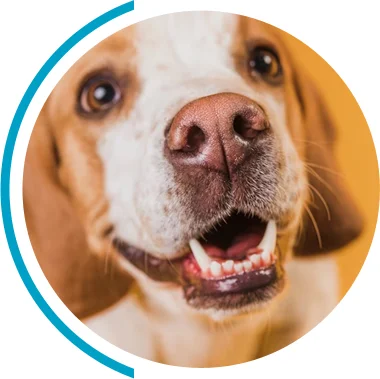Anxiety in dogs is a serious issue that can affect their quality of life and the bond they have with their owners. It’s essential for pet parents to recognize that anxiety is not just a phase that a dog will grow out of; it often requires intervention to ensure the well-being of the dog. Just like humans, dogs can experience stress and anxiety, which can manifest in various behaviors and reactions.
Understanding the nuances of dog anxiety is crucial. It often stems from a combination of genetic predispositions, previous traumatic experiences, and inadequate socialization. By identifying the root of a dog’s anxiety, owners can take appropriate steps to help their furry friends. This may include creating a safe space in the home where the dog can retreat when feeling overwhelmed, as well as establishing a consistent routine that helps the dog feel secure. Additionally, engaging in regular exercise and mental stimulation can significantly reduce anxiety levels, allowing the dog to channel their energy in positive ways.
Recognizing the signs of anxiety in dogs can be challenging, especially since they cannot vocalize their feelings. Common indicators include excessive barking, destructive behavior, and attempts to escape. Other signs may include excessive licking, pacing, and a tendency to hide or seek comfort in small spaces. It’s also worth noting that some dogs may exhibit changes in their eating habits, either refusing food altogether or overeating as a coping mechanism.
Moreover, dogs suffering from anxiety may also show signs of physical distress, such as trembling, drooling, or panting. It’s important for dog owners to monitor their pets closely and consult professionals if they notice consistent anxious behaviors. In some cases, anxiety can escalate to the point where it affects the dog’s physical health, leading to issues like gastrointestinal problems or weakened immune responses. Therefore, being vigilant about these signs and seeking timely intervention can make a significant difference in a dog’s overall well-being.
The causes of anxiety in dogs can vary widely among individual animals. Common factors contributing to this issue include separation from their owners, exposure to loud noises, or negative past experiences with unfamiliar people or animals. Additionally, certain breeds may be more prone to anxiety due to their genetic makeup. Breeds such as Border Collies, German Shepherds, and Cavalier King Charles Spaniels are often noted for their sensitivity and may require extra attention to their emotional needs.
Environmental factors also play a role in the development of anxiety. A chaotic household, constant changes in routine, or lack of socialization during early developmental stages can lead to heightened anxiety levels in dogs. Furthermore, changes such as moving to a new home, the arrival of a new family member, or even the loss of a companion can trigger anxiety in dogs. Understanding these causes is crucial for effective intervention. By creating a stable environment and gradually introducing new experiences, owners can help their dogs build confidence and resilience in the face of anxiety-inducing situations.
Dogs can experience various types of anxiety disorders, each with its own set of challenges and symptoms. Identifying the type of anxiety a dog is facing is a critical first step in developing an effective treatment plan.
Separation anxiety is one of the most common anxiety disorders in dogs. This occurs when a dog becomes extremely distressed when left alone or separated from its owner. Symptoms can include destructive behavior, excessive barking, and even house soiling.
Owners dealing with a dog that has separation anxiety often find it distressing to see their pet in such a state. Working closely with a veterinarian or a certified animal behaviorist can help develop a comprehensive plan to gradually desensitize the dog to separation.
Noise anxiety is another prevalent issue, particularly in dogs that are sensitive to sounds like thunder, fireworks, or even loud household appliances. Dogs with noise anxiety may show signs of fear or panic when exposed to such sounds, leading them to hide or exhibit aggressive behaviors.
Owners can help their dogs cope with noise anxiety by creating a safe and comfortable environment and utilizing desensitization techniques to acclimate them to the sounds gradually.
Social anxiety is marked by a dog’s apprehension towards other dogs or people. This can result in avoidance behaviors, growling, or even biting if the anxiety escalates. Training and socialization from a young age are crucial in preventing social anxiety.
For dogs already exhibiting signs of social anxiety, positive reinforcement techniques that encourage calm behavior in social situations can be beneficial. Consulting with a professional dog trainer can provide strategies tailored to the individual dog’s needs.
In Santa Clara, various professional treatments are available for dogs suffering from anxiety disorders. These treatments can be beneficial when anxiety significantly impacts a dog’s life.
Veterinarians play a vital role in diagnosing anxiety and offering treatment options. Depending on the severity of the anxiety, a veterinarian may recommend medication designed to help reduce anxiety levels. This is often used in conjunction with behavioral training.
Veterinary anxiety treatments can provide immediate relief for the dog, allowing it to be more receptive to training and rehabilitation strategies. Regular follow-up consultations help ensure the treatment remains effective.
Behavioral therapy can be particularly effective in managing anxiety disorders in dogs. Through consistent training and exposure to various stimuli, dogs can learn coping mechanisms to deal with anxiety-inducing situations.
Trainers often use methods such as desensitization, counter-conditioning, and positive reinforcement to modify a dog’s behavior. Finding an experienced trainer or behaviorist in Santa Clara who specializes in anxiety disorders can prove integral to a successful treatment plan.
In addition to professional treatments, many dog owners turn to home remedies to alleviate anxiety. These methods can complement professional care and are often easier to implement daily.
Training techniques can significantly reduce anxiety in dogs. Basic obedience commands can provide structure and security, helping dogs feel more confident. Training sessions should be positive and engaging, using rewards to encourage desired behaviors.
Desensitization techniques, such as exposing the dog to its anxiety triggers in a controlled and safe environment, can also be highly effective. Gradually increasing exposure while maintaining a calm and reassuring demeanor can help the dog build resilience over time.
Natural supplements are another option for alleviating anxiety in dogs. Products containing ingredients like chamomile, valerian root, and L-theanine have shown promise in reducing stress levels. However, it’s essential to consult a veterinarian before introducing any supplements to ensure they are safe and appropriate for the individual dog.
Preventive measures can significantly reduce the likelihood of anxiety developing in dogs. Early intervention and socialization are key factors in maintaining a dog’s mental well-being.
Socializing dogs from an early age is critical. This involves exposing puppies to a variety of experiences, such as different people, environments, and animals. The goal is to help them become well-adjusted and comfortable in various situations.
Habituation is also essential, as it helps dogs learn to tolerate everyday stimuli that may initially cause anxiety. Regular outings and positive encounters with new experiences can foster resilience and adaptability in dogs.
Establishing consistent routines and a stable environment can greatly benefit a dog’s anxiety levels. Predictable schedules for feeding, playtime, and walks can help provide a sense of security. Changes to the environment should be minimized, as unstable surroundings can contribute to anxiety.
Overall, understanding anxiety in dogs enables owners to take proactive steps in treatment and prevention. Whether through professional help or home remedies, the key is providing a supportive and loving environment that fosters their well-being.
If you’re feeling overwhelmed by your dog’s anxiety, remember that you’re not alone. At The Grounded Hound Canine Coaching, we understand the challenges you and your furry friend are facing. With a CTC from the Academy for Dog Trainers, an ABCDT from the Animal Behavior College, and specialized certifications in separation anxiety, we’re equipped to offer you the support and guidance you need. Our approach is rooted in Patience, Kindness, and Consistency, ensuring that we build a strong bond of understanding between you and your dog. Don’t let anxiety stand in the way of your dog’s happiness. Contact Us Today and take the first step towards a calmer, more confident companion.

